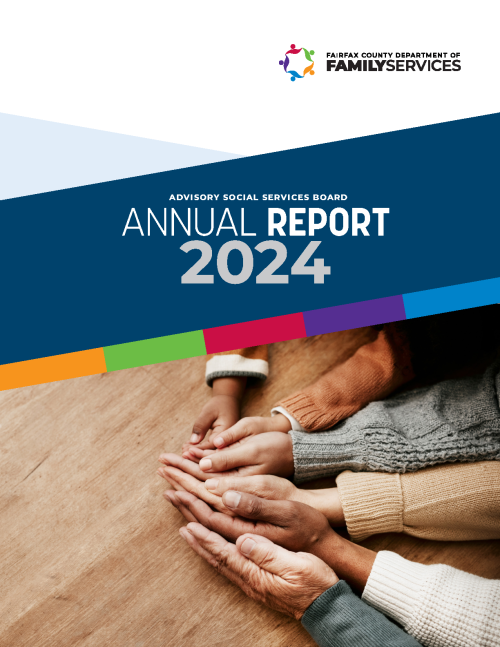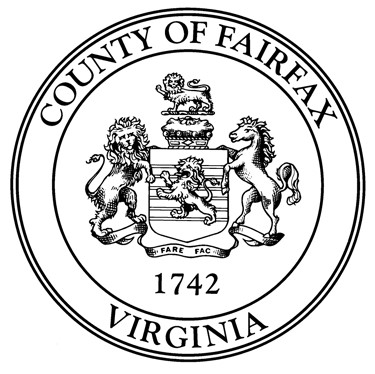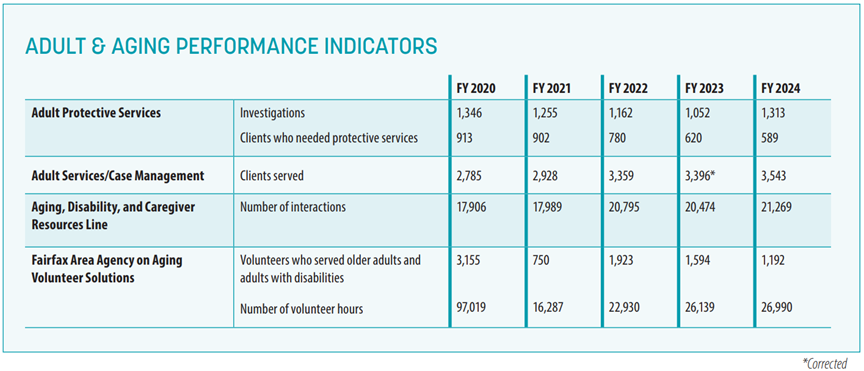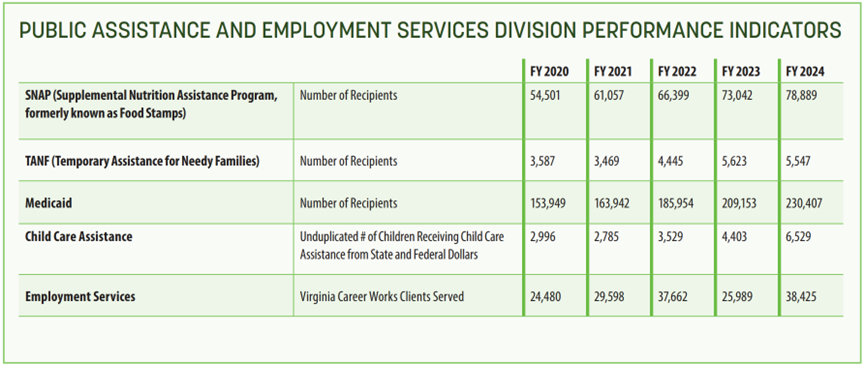Domestic and Sexual Violence Services
Provides a 24-hour crisis hotline, the Lethality Assessment Protocol (LAP), advocacy, information, counseling, resources, and liaison for emergency shelter for victims and survivors of interpersonal violence. The division also provides countywide coordination and prevention to improve access to services and the community responses to interpersonal violence. DSVS provides intervention treatment to persons that cause harm to family members. DSVS also provides education, outreach, and training on issues related to interpersonal and gender-based violence such as domestic and sexual violence, human trafficking, and stalking.
Advocacy Services
Enhances safety for victims of domestic violence, sexual violence, and stalking through counseling, court education and accompaniment, and support accessing appropriate resources.
Community Engagement
Promotes awareness of the impact of interpersonal violence, including its overlap with other social determinants of health and wellbeing. The unit operates Fairfax County’s Domestic and Sexual Violence 24-Hour Hotline and the LAP, and Hospital Accompaniment Support Advocates (HASA) provide support before, during, and after a forensic exam. Community Engagement provides programs and trainings focused on prevention and intervention strategies.
Coordinated Community Response
Engages human service and public safety agencies, as well as nonprofit organizations and community leaders, in identifying and implementing best practices, developing innovative prevention and intervention programming, and raising awareness of the prevalence and impact of interpersonal violence in our community.
Counseling Services
Provides short-term, individual, family, and group counseling to survivors of domestic and sexual violence, stalking, teen dating violence, and human trafficking.
Anger and Domestic Abuse Prevention and Treatment (ADAPT)
Offers violence intervention services for adults who have caused harm to household/family members or dating partners and violence prevention services for high-conflict couples.
Human Trafficking Services
Provides hotline services, advocacy, and counseling to victims of human trafficking. The unit works closely with other regional, county, and community groups to collect data, provide training, and develop response plans.
Stalking Services
Provides direct advocacy and counseling services for survivors of stalking either in person or through the Fairfax County Domestic and Sexual Violence 24-Hour Hotline. The unit provides training and technical assistance to allied professionals to increase their capacity to respond to survivors of stalking in their work.
 The Advisory Social Services Board interests itself in all matters pertaining to the wellbeing of the residents of Fairfax County. The Board monitors the formation and implementation of social support programs; meets with and advises the Director of the Department of Family Services for the purpose of making recommendations on policy matters; makes an annual report to the Board of Supervisors concerning the administration of the social services programs; and submits other reports as appropriate.
The Advisory Social Services Board interests itself in all matters pertaining to the wellbeing of the residents of Fairfax County. The Board monitors the formation and implementation of social support programs; meets with and advises the Director of the Department of Family Services for the purpose of making recommendations on policy matters; makes an annual report to the Board of Supervisors concerning the administration of the social services programs; and submits other reports as appropriate.




 As the older adult population in Fairfax County continues to grow, the demand for services to support healthy aging within community-based settings is also increasing. The acuity and complexity of clients’ needs are increasing due to physical, mental, socioeconomic, and cognitive challenges, and their need for intensive and comprehensive support is only projected to grow.
As the older adult population in Fairfax County continues to grow, the demand for services to support healthy aging within community-based settings is also increasing. The acuity and complexity of clients’ needs are increasing due to physical, mental, socioeconomic, and cognitive challenges, and their need for intensive and comprehensive support is only projected to grow.  This program offers contracted in-home services such as bathing, laundry, and light housekeeping for clients who meet functional and financial eligibility criteria and would be at risk for institutionalization without those services. Eighty-eight percent of Adult Services clients were able to continue living in their own homes after one year of case management services, which is consistent with the program’s goal of 80 percent.
This program offers contracted in-home services such as bathing, laundry, and light housekeeping for clients who meet functional and financial eligibility criteria and would be at risk for institutionalization without those services. Eighty-eight percent of Adult Services clients were able to continue living in their own homes after one year of case management services, which is consistent with the program’s goal of 80 percent. A client in Adult and Aging experienced homelessness due to untreated mental health issues and losing housing support provided by family members. An Adult Services (AS) worker’s empathy and keen understanding of the client’s complex needs led him to conduct a comprehensive assessment of the client. By prioritizing the client’s immediate requirements, the AS worker navigated the process of connecting with various professionals, including the Intensive Case Management team at the Fairfax-Falls Church Community Services Board, and a case manager at a local shelter. Throughout the collaboration, the AS worker ensured the client’s urgent needs were met and secured a bed at a local shelter while arranging for a Long-Term Services and Support screening for nursing home placement. The AS worker effectively bridged communication between the client’s son who resides in Maryland, and a friend who was advocating for the client but needed help navigating the Medicaid system. As a result of the worker’s dedication and resourcefulness, the client is now stable at a local nursing home, where both the son and friend visit regularly. This outcome reflects the AS worker’s commitment to the client’s wellbeing and the collaborative spirit of community.
A client in Adult and Aging experienced homelessness due to untreated mental health issues and losing housing support provided by family members. An Adult Services (AS) worker’s empathy and keen understanding of the client’s complex needs led him to conduct a comprehensive assessment of the client. By prioritizing the client’s immediate requirements, the AS worker navigated the process of connecting with various professionals, including the Intensive Case Management team at the Fairfax-Falls Church Community Services Board, and a case manager at a local shelter. Throughout the collaboration, the AS worker ensured the client’s urgent needs were met and secured a bed at a local shelter while arranging for a Long-Term Services and Support screening for nursing home placement. The AS worker effectively bridged communication between the client’s son who resides in Maryland, and a friend who was advocating for the client but needed help navigating the Medicaid system. As a result of the worker’s dedication and resourcefulness, the client is now stable at a local nursing home, where both the son and friend visit regularly. This outcome reflects the AS worker’s commitment to the client’s wellbeing and the collaborative spirit of community. 
 The Fairfax-Falls Church Children’s Services Act (CSA) program administers a Virginia law that funds a continuum of child welfare, special education, and intensive mental health and substance abuse services for children and youth across multiple county agencies, the school system, and private treatment providers. Following a System of Care model, CSA supports child-serving agencies to help youth and families in our community access services and supports to meet their behavioral health care needs. As a part of the Healthy Minds Fairfax initiative, the model for CSA promotes collaboration between agencies, schools, and the provider community for integration of service delivery for youth and their families with oversight by cross-agency management and leadership teams. The Cities of Falls Church and Fairfax are included in the scope of the program and contribute to the cost of serving participants from those jurisdictions.
The Fairfax-Falls Church Children’s Services Act (CSA) program administers a Virginia law that funds a continuum of child welfare, special education, and intensive mental health and substance abuse services for children and youth across multiple county agencies, the school system, and private treatment providers. Following a System of Care model, CSA supports child-serving agencies to help youth and families in our community access services and supports to meet their behavioral health care needs. As a part of the Healthy Minds Fairfax initiative, the model for CSA promotes collaboration between agencies, schools, and the provider community for integration of service delivery for youth and their families with oversight by cross-agency management and leadership teams. The Cities of Falls Church and Fairfax are included in the scope of the program and contribute to the cost of serving participants from those jurisdictions.
 A 16-year-old youth came to the attention of the Community Services Board’s Youth and Family Resource Team due to his severe opioid use. The teenager had been using fentanyl for over a year and had three non-fatal overdoses in the span of four months. The most recent overdose occurred when his father was at work, resulting in him coming home to find his son unconscious on the bathroom floor. Fearful for his son’s life, the father sought treatment for his son who agreed. The family was referred to CSA for services and attended a Family Assessment and Planning Team (FAPT) meeting, where they developed a plan for residential treatment to address the son’s addiction. After four months in his treatment program, the youth transitioned back home to his family. He received supportive CSA-funded community-based services, including Intensive Outpatient, Medication Assisted Treatment and Intensive Care Coordination. The CSA also helped with transportation to make sure he could attend services. The youth has maintained his sobriety for one year. He attends school daily with much improved grades, plays soccer on his high school team, and has a plan to graduate on time and find a job. His motivation remains high!
A 16-year-old youth came to the attention of the Community Services Board’s Youth and Family Resource Team due to his severe opioid use. The teenager had been using fentanyl for over a year and had three non-fatal overdoses in the span of four months. The most recent overdose occurred when his father was at work, resulting in him coming home to find his son unconscious on the bathroom floor. Fearful for his son’s life, the father sought treatment for his son who agreed. The family was referred to CSA for services and attended a Family Assessment and Planning Team (FAPT) meeting, where they developed a plan for residential treatment to address the son’s addiction. After four months in his treatment program, the youth transitioned back home to his family. He received supportive CSA-funded community-based services, including Intensive Outpatient, Medication Assisted Treatment and Intensive Care Coordination. The CSA also helped with transportation to make sure he could attend services. The youth has maintained his sobriety for one year. He attends school daily with much improved grades, plays soccer on his high school team, and has a plan to graduate on time and find a job. His motivation remains high!

 The number of Child Protective Services referrals had seen a sharp increase in FYs 2022 and 2023; this declined 15 percent in FY 2024 (from 2,793 to 2,379). We continue to collaborate with the public school system, which is the largest reporter of suspected child abuse and neglect. Timely response to these referrals, a key metric of service quality, remained stable at 93 percent. CPS has implemented several targeted strategies to achieve the new performance level of 95 percent in FY 2025.
The number of Child Protective Services referrals had seen a sharp increase in FYs 2022 and 2023; this declined 15 percent in FY 2024 (from 2,793 to 2,379). We continue to collaborate with the public school system, which is the largest reporter of suspected child abuse and neglect. Timely response to these referrals, a key metric of service quality, remained stable at 93 percent. CPS has implemented several targeted strategies to achieve the new performance level of 95 percent in FY 2025. After a 2-year-old girl couldn’t safely remain in her father’s care due to his substance abuse, her 70-year-old great-grandmother did not hesitate to step up and complete all the requirements to become a kinship foster parent. The grandmother was also parenting two of her other grandchildren when DFS contacted her about her great-granddaughter. Overnight, this retiree assumed the sole responsibility of caring for three children on an extremely tight budget. Enter the DFS partnership with Project Belong and their Care Community concept. Project Belong partners with faith communities to train volunteers to support families in need in the community. DFS connected this great-grandmother to Project Belong, and one of their Care Communities jumped in to help this family. They discussed what would be most helpful to the caregiver: mentors for each of the children to give her a break and provide the children with additional opportunities and connections, dropping off groceries or weekly meals, and assisting with transportation and technology. DFS and Project Belong helped this great-grandmother know she’s not alone by providing the supports to enable her to succeed in keeping her family together.
After a 2-year-old girl couldn’t safely remain in her father’s care due to his substance abuse, her 70-year-old great-grandmother did not hesitate to step up and complete all the requirements to become a kinship foster parent. The grandmother was also parenting two of her other grandchildren when DFS contacted her about her great-granddaughter. Overnight, this retiree assumed the sole responsibility of caring for three children on an extremely tight budget. Enter the DFS partnership with Project Belong and their Care Community concept. Project Belong partners with faith communities to train volunteers to support families in need in the community. DFS connected this great-grandmother to Project Belong, and one of their Care Communities jumped in to help this family. They discussed what would be most helpful to the caregiver: mentors for each of the children to give her a break and provide the children with additional opportunities and connections, dropping off groceries or weekly meals, and assisting with transportation and technology. DFS and Project Belong helped this great-grandmother know she’s not alone by providing the supports to enable her to succeed in keeping her family together. 

 In FY 2024, DSVS responded to 2,060 calls from its 24-hour domestic and sexual violence hotline and 465 calls to the Lethality Assessment Program (LAP) crisis line, which helps responding law enforcement officers assess the imminency of danger to victims/survivors of intimate partner violence. DSVS also served 1,099 persons through advocacy services, including 360 individual/family clients and 54 group clients in clinical services. Forty-seven clients were served through hospital accompaniment. Hotline services experienced a 10 percent increase in the number of clients served in FY 2024. Advocacy services and ADAPT served similar client numbers and intakes, respectively, as in FY 2023. Ninety-two percent of victims/survivors served through hotline, advocacy, and counseling services reported improved ability to plan for safety and 78 percent of persons who completed ADAPT demonstrated self-responsibility for abusive behaviors.
In FY 2024, DSVS responded to 2,060 calls from its 24-hour domestic and sexual violence hotline and 465 calls to the Lethality Assessment Program (LAP) crisis line, which helps responding law enforcement officers assess the imminency of danger to victims/survivors of intimate partner violence. DSVS also served 1,099 persons through advocacy services, including 360 individual/family clients and 54 group clients in clinical services. Forty-seven clients were served through hospital accompaniment. Hotline services experienced a 10 percent increase in the number of clients served in FY 2024. Advocacy services and ADAPT served similar client numbers and intakes, respectively, as in FY 2023. Ninety-two percent of victims/survivors served through hotline, advocacy, and counseling services reported improved ability to plan for safety and 78 percent of persons who completed ADAPT demonstrated self-responsibility for abusive behaviors.  A victim of domestic violence reached out to the Fairfax County Domestic and Sexual Violence 24-Hour Hotline after experiencing panic attacks due to ongoing abuse. The caller reported being subjected to verbal, physical, and financial abuse by their partner. Using the Lethality Assessment Protocol (LAP) screening tool, the Hotline Specialist determined the caller was at high risk for serious assault or homicide. Together, the Hotline Specialist and the caller developed a safety plan that: identified informal support networks, such as friends or family members; explored emergency shelter options; prepared an emergency bag with clothing, cash, and important documents; and created a list of emergency contacts, including 911, a local emergency domestic violence shelter, and the Fairfax Domestic and Sexual Violence 24-Hour Hotline. The caller also expressed concerns about their partner tracking their location and feared being found if they left home, so the Hotline Specialist provided guidance on disabling location tracking on the caller’s cell phone and shared resources about technology-facilitated stalking. Additionally, the Hotline Specialist offered information on various support resources, including advocacy services, medical treatment options, financial support, and counseling services. The caller was supported through every aspect of her road to recovery by staff commitment and perseverance.
A victim of domestic violence reached out to the Fairfax County Domestic and Sexual Violence 24-Hour Hotline after experiencing panic attacks due to ongoing abuse. The caller reported being subjected to verbal, physical, and financial abuse by their partner. Using the Lethality Assessment Protocol (LAP) screening tool, the Hotline Specialist determined the caller was at high risk for serious assault or homicide. Together, the Hotline Specialist and the caller developed a safety plan that: identified informal support networks, such as friends or family members; explored emergency shelter options; prepared an emergency bag with clothing, cash, and important documents; and created a list of emergency contacts, including 911, a local emergency domestic violence shelter, and the Fairfax Domestic and Sexual Violence 24-Hour Hotline. The caller also expressed concerns about their partner tracking their location and feared being found if they left home, so the Hotline Specialist provided guidance on disabling location tracking on the caller’s cell phone and shared resources about technology-facilitated stalking. Additionally, the Hotline Specialist offered information on various support resources, including advocacy services, medical treatment options, financial support, and counseling services. The caller was supported through every aspect of her road to recovery by staff commitment and perseverance.

 The end of state and federal flexibilities related to the Public Health Emergency (PHE) was originally expected to lead to a decline in the Medicaid caseload. Growth of just over 21,000 recipients from FY 2023 shows the continued need for expanded medical coverage in the community. This increase resulted in continuing increased workloads for staff who are already responsible for processing thousands of cases and redeterminations. As with previous years, the community is continuing to experience increased costs of groceries, leading to more households experiencing food insecurity. The Supplemental Nutrition Assistance Program (SNAP) saw a climb in the number of recipients to a new all-time high of 78,889 people, with almost 35,000 of those being children and young adults under 19.
The end of state and federal flexibilities related to the Public Health Emergency (PHE) was originally expected to lead to a decline in the Medicaid caseload. Growth of just over 21,000 recipients from FY 2023 shows the continued need for expanded medical coverage in the community. This increase resulted in continuing increased workloads for staff who are already responsible for processing thousands of cases and redeterminations. As with previous years, the community is continuing to experience increased costs of groceries, leading to more households experiencing food insecurity. The Supplemental Nutrition Assistance Program (SNAP) saw a climb in the number of recipients to a new all-time high of 78,889 people, with almost 35,000 of those being children and young adults under 19. A husband, wife, and their three young children immigrated to the United States in April 2023. They were approved for Temporary Assistance to Needy Families (TANF) and began their employment journey with the support of their Virginia Initiative for Education and Work (VIEW) case manager. They both enrolled in English as a Second Language (ESL) and Job Readiness classes. Upon the recommendation of his case manager, the father completed the Ground Up Trade and Talent Solutions (GUTTS) Plumbing three-week pre-apprenticeship program. This experience led to full-time employment as an assistant project manager with a plumbing company earning $25 per hour. VIEW staff followed up with the employer to share information on the Full Employment Program (FEP), which allows the client to maintain TANF benefits for his first six months of employment and provides an incentive to the employer.
A husband, wife, and their three young children immigrated to the United States in April 2023. They were approved for Temporary Assistance to Needy Families (TANF) and began their employment journey with the support of their Virginia Initiative for Education and Work (VIEW) case manager. They both enrolled in English as a Second Language (ESL) and Job Readiness classes. Upon the recommendation of his case manager, the father completed the Ground Up Trade and Talent Solutions (GUTTS) Plumbing three-week pre-apprenticeship program. This experience led to full-time employment as an assistant project manager with a plumbing company earning $25 per hour. VIEW staff followed up with the employer to share information on the Full Employment Program (FEP), which allows the client to maintain TANF benefits for his first six months of employment and provides an incentive to the employer.